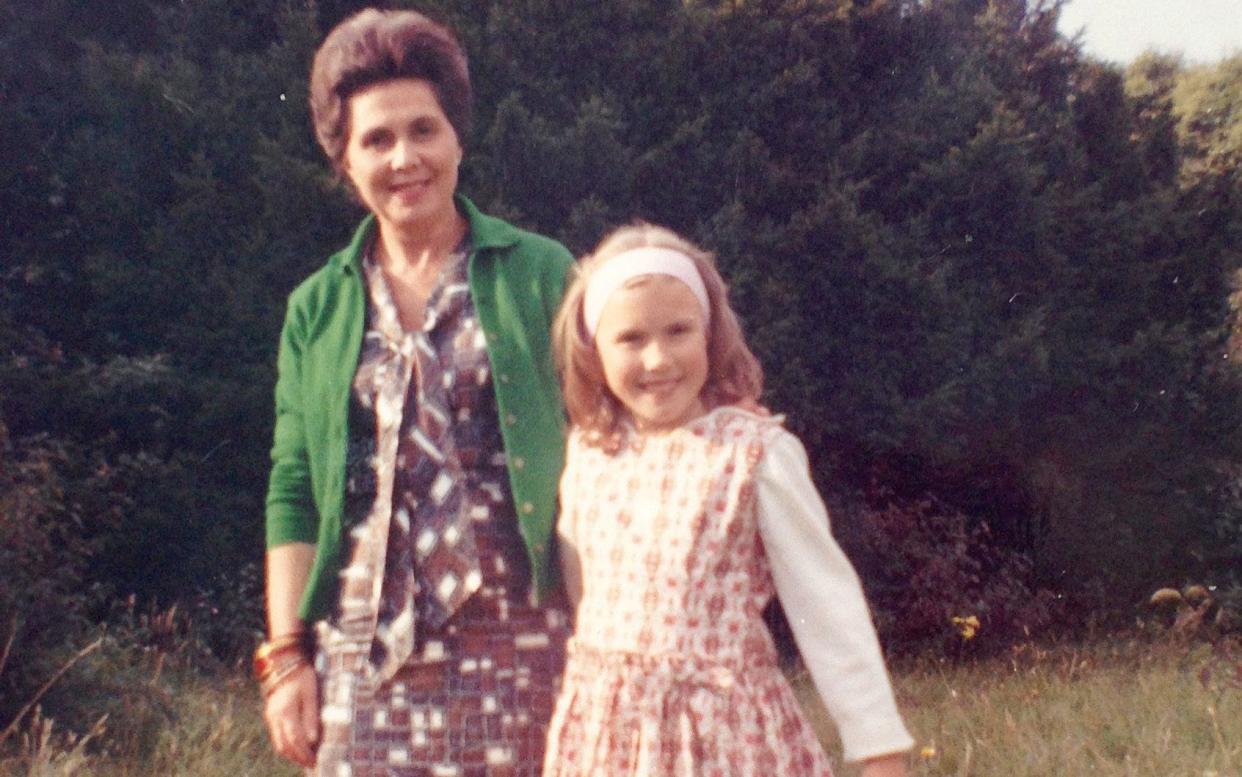'I buried my mum in the back garden'

As I watched my friends shovelling earth on to Mum’s grave from my kitchen window, I knew I’d done the right thing. ‘I want to stay close to you,’ she’d said before she died. Burying her in my garden felt like I was keeping my promise to her.
Mum and I had always had a strong bond. I was an only child and Dad left when I was 14, so we did everything together. We spent Saturday nights at the cinema, went on country walks, and even after I moved out of her home in Portsmouth and married my husband, Richard, I still turned to her for advice. I couldn’t imagine life without her. Even when we weren’t physically together, we remained emotionally close.
But when she was diagnosed with pancreatic cancer aged 82, and given only three weeks to live, I realised her death was something I had to accept. We began talking about the practicalities. Mum wasn’t religious. She didn’t want to be buried in a cemetery, or in a coffin, as she was scared of waking up in it.
Watching the flowers on her grave grow from my kitchen window has been healing
We shared a dark sense of humour and one day I joked that I was going to be buried in my back garden. ‘What a wonderful idea,’ she cried. ‘I’d like to be buried there, too.’ I was in such shock over her illness that I was unfazed by her reaction, and I started looking into it.
What surprised me most was how remarkably straightforward it was. I discovered I had to own the freehold of the land (which I did) and that there had to be a metre of soil above and below the body. But other than that, there were few restrictions. Richard was very supportive and none of my friends questioned it, although my best friend Niamh admitted she thought the burial itself would be awful.
Three days before she died, Mum moved in with us. She was in so much pain that her death almost came as a relief. Even so, I was grief-stricken and switched to autopilot. First, I notified a doctor who gave us a death certificate and contacted the local coroner who supplied us with a Certificate for Burial.
I covered Mum in her favourite duvet, decorated with Monet-style poppies, before Richard and I moved her into the summerhouse. We buried her a few days later.
How to cope with grief and loss
I invited just 10 people to the ceremony as I wanted to keep it intimate. That morning I woke up feeling strangely calm. It was a cold, bright winter’s day and we placed Mum on a bier (she didn’t want a coffin) then carried her through an arch, which I’d decorated with ribbons, and lowered her into the ground.
Instead of a formal ceremony, I read the poemPostscript by Seamus Heaney, which finishes with a line about a gust of wind blowing your heart sideways. That was how I felt about Mum’s death.
After the service, Niamh told me that despite her worries, it was the loveliest funeral she had been to. We drank champagne and reminisced about Mum’s life all afternoon. Later that day I broke down in tears. I felt bereft, but it was a comfort to know Mum was nearby.
I sprinkled her favourite wildflower seeds by her grave in place of a headstone. Watching the flowers grow from my kitchen window has been healing; it helped me come to terms with losing her.
Choosing to bury my mum in the back garden may seem an unusual way to grieve but I’ll never regret it. It helped comfort me through one of the most difficult times of my life, and saw me through to the other side.
‘The Book of Bera, Part One: Sea Paths’ by Suzie Wilde (£16.99, Unbound) is out now
For more One Days click here. Has one day changed your life? Email us at stella@telegraph.co.uk or tweet us @stellamagazine #OneDay

